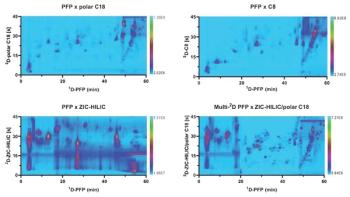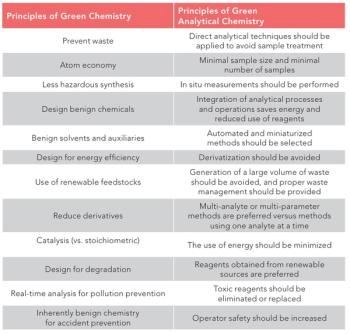
- The Application Notebook-09-02-2018
- Volume 36
- Issue 9
Rapid Separation of Basic Drug Compounds on pH-Stable Hamilton PRP™-C18
Mobile-phase pH is a powerful tool in method development, particularly for separation of neutral forms of amines or other organic bases under alkaline conditions. In this study a generic, 5-min linear gradient was used to separate six basic drug compounds on a short (50 mm) PRP-C18 column.
More than 70% of all pharmaceutical drug compounds are cationic solutes that carry a formal positive charge below pH 7. Separation of these and other organic bases has historically been problematic. Ionization has a dominating effect in reversed-phase chromatography that tends to dictate retention. Consequently, the elution window for a sample of ionized amines is narrow. The task is further complicated by secondary interactions that occur between positively charged solutes and residual silanols on the column stationary phase. These secondary mechanisms of retention are the principle source for anomalous chromatographic activity, such as poor peak shape, shifts in retention times and loss of efficiency that progressively worsen over the life of the column.
Figure 1: Rapid separation of six basic drug compounds on a 50 mm PRP-C18.
The PRP-C18 is a new column designed for high-efficiency reversed phase separations under any mobile phase conditions. The stationary phase for the PRP-C18 is devoid of free silanols, does not strip, bleed, or dissolve at any pH, and therefore can be expected to perform reliably and reproducibly throughout the extended life of the column, regardless of mobile-phase conditions. Use of alkaline mobile phase (pH > 11) permits separation of basic solutes in their neutral forms. This broadens the window for elution, whereby subtle structural nuances among chemically similar compounds can be exploited to effect resolution.
Although some recent C18 columns boast stability in alkaline pH, all silica-based supports experience measurable degradation at pH > 6, where column life is still considerably shorter than if used under more favorable conditions. On the other hand, the PRP-C18 stands up to prolonged exposure to concentrations as high as 1 M NaOH and H2SO4, with no measurable decrease in performance.
Experimental Conditions
Click here to view full-size graphic
Results and Conclusion
In modern drug discovery science where analytical HPLC can be a bottleneck, the trend is to streamline production through the use of shorter columns with smaller particles operated at elevated flow rates. The flexibility to employ a high pH mobile phase is another valuable tool that permits separation of basic solutes in their neutral forms. Oftentimes, this greatly simplifies the process of methods development. In this study, separation of a set of structurally diverse pharmaceutical compounds is achieved on a short (50 mm) PRP-C18 column using a generic 5 min linear gradient.
Hamilton Company
4970 Energy Way, Reno, NV 89502
tel. (800) 648-5950, fax (775) 858-3026
Website:
Articles in this issue
over 7 years ago
Fast Separation of Triptans in Rat Plasma on ZirChrom®-PBDover 7 years ago
RPC-MALS Analysis of Protein Oligomersover 7 years ago
Determination of Pharmaceuticals from SerumNewsletter
Join the global community of analytical scientists who trust LCGC for insights on the latest techniques, trends, and expert solutions in chromatography.




